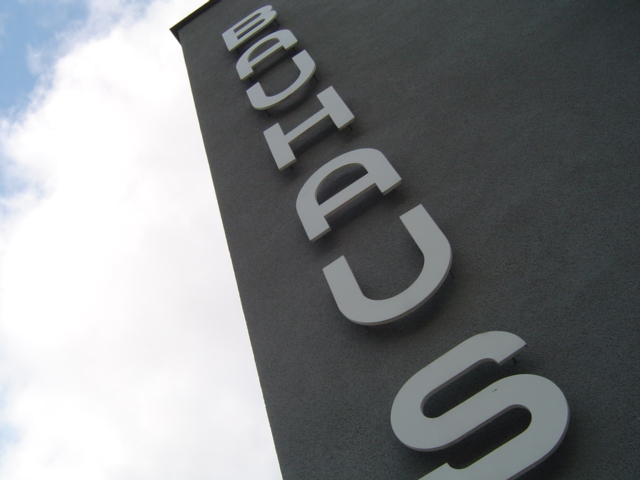The original Bauhaus sought to create the building of the future that would unite every discipline from architecture to sculpture and painting. 100 years later, European Commission president, Ursula Von der Leyen has revitalised the movement to create homes and public buildings that help cities become greener and that reconnect us with nature, based on the 3 principles of sustainability, aesthetics and inclusion. This New European Bauhaus (NEB) gives a platform for architects, artists, students, engineers and designers to work together. The Commission has created NEB prizes showcasing projects that help steer the movement towards its goals. Ciarán Cuffe, who is a Member of the European Parliament (MEP) for the Greens/EFA group, gives us some insights.

The New European Bauhaus-Movement combines sustainability, aesthetics and inclusion. (Photo by Jean-François Goyette, CC BY 2.0)
The Bauhaus is an opportunity to showcase the European Green Deal by creating a cultural movement combining art, technology and design. The NEB can also democratise the transition within our communities to make to a future in tune with climate goals, giving people the chance of participation and community ownership toin the green transition.
Whereas a more critical perspective on the Bauhaus can show both positive and negative aspects – including the general understatement of the contributions of female artists – many of its principles and tenets can speak to us today: “Form follows function”, “Truth to materials”, “Less is more”. I feel that the same spirit of renewal and social progress that the Bauhaus brought to Europe after the devastations of World War I is now needed in the face of the destruction that we are living through due to the climate crisis and the enormous environmental, economic and societal challenges before us. While being genuinely New and European, we see the task for the NEB to be more inclusive and participative. It must reinterpret the Bauhaus zeitgeist in light of the climate crisis and re-design our private and public spaces at a time when natural disasters, social inequalities and their costs for citizens are all dramatically increasing.
We have already seen the first set of Bauhaus Prizes awarded and I believe that this marks the beginning of the New European Bauhaus as a cultural movement. I was happy that many pro-biodiversity projects were among the prize finalists in 2021. This must be further encouraged and expanded. The NEB should celebrate projects that align with the EU’s circular economy action plan and sustainable building materials, such as “erden walls” – made by a company that has modernised rammed earth as a building material which fits in with the natural environment.
It is also important to emphasise the inclusivity and accessibility aspects of the NEB. To encourage a grassroots take up of this movement, we need a participatory and inclusive approach. Rural, island and remote communities should have every opportunity to benefit from this movement too; the NEB is not just for cities! Let’s not forget to also facilitate input from people of different abilities who are often marginalised in our societies.
Currently, in the European Parliament we are debating whether or not there needs to be a dedicated NEB fund to finance the New European Bauhaus projects. While some agree that the NEB needs its own funding source, it should not cut funds from existing programmes. A solution to this may be to align New European Bauhaus principles – sustainability, inclusion, aesthetics – with existing programmes and funding streams.
These could include the 100 climate-neutral and smart cities mission, for instance, as well as spending from the Recovery and Resilience Facility. Other European countries should be encouraged to finance NEB-related projects and to align their investment to the spirit of the NEB under such programmes.
The New European Bauhaus needs to support projects that can provide quality social housing such as LUOGHI COMUNI TORINO, HOMES4LESS and Aprop Ciutat Vella. All these projects were shortlisted for the Bauhaus Prize last year and provide real examples of how we can transform our built environment for the better.
Of particular note, HOMES4LESS creates modular structures that can rehabilitate a temporarily unoccupied building and turn it into accommodation for the homeless.
Luoghi Comuni provides temporary social housing in disused buildings. The project mixes sustainable refurbishment practises with the neighbouring intercultural communities such as a kindergarten. Integration with the existing community is key to its success.
Aprop Ciutat Vella in Barcelona is an affordable housing programme that gives evicted households emergency accommodation in their own neighbourhood. Their construction system uses old shipping containers that are modified to achieve high rates of energy efficiency. Whilst not substituting the need for long-term housing, the project is effective in tackling an immediate crisis.
Mainstreaming projects like this into our towns and cities would directly combat homelessness and energy poverty and do it in a sustainable fashion. In my view, projects like these are at the heart of the New European Bauhaus.
The Bauhaus will also be a vehicle to create local and sustainable jobs that will help us in the energy transition. This can complement the European Renovation Wave Strategy with creating a climate-neutral building stock by upskilling existing jobs to include green and circular skills as well as fostering new job profiles, such as specialists in deep building renovation including professionals and craftspeople.
We also need to have more of a focus on education and training that will benefit a just transition by including training projects in the NEB. While there are several projects that have been submitted in cooperation with different architecture and design universities, I believe that the Bauhaus also has a role to play in training workers to adapt to the energy transition by supplying educational courses that support workers to find green jobs in the renewable sector as well as in others.
Ultimately, we have the tools to build a New Bauhaus that will be able to face the climate crisis and make our lives and living areas more sustainable, inclusive and beautiful; it’s simply a matter of implementing it.